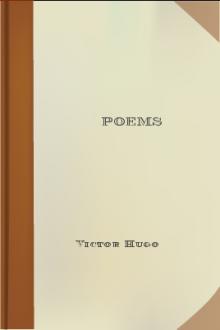Books author - "Victor Hugo"

Description Esmeralda is a breathtaking beauty and attracts the attention of men all around her, including an actor, a captain, and an archdeacon, to whom she is of course forbidden. But because of a kindness she paid to him, there is one whose love for her is pure: the archdeacon’s bellringer. The actions of the archdeacon, who cannot control his lust for the young woman, ultimately draws all four men into her orbit, and his, with tragic consequences. Hugo’s tragic novel is an ode to gothic

th his mother's death all that had vanished. His tragedyof "Cromwell" broke lances upon Royalists and upholders of the stillreigning style of tragedy. The second collection of "Odes" preluding it,showed the spirit of the son of Napoleon's general, rather than of theBourbonist field-marshal. On the occasion, too, of the Duke of Tarentobeing announced at the Austrian Ambassador's ball, February, 1827, asplain "Marshal Macdonald," Victor became the mouthpiece of

--are depicted with kindlinessbut sincerity.The horizon, however, grows dark, and from 1846 the new peer ofFrance notes the gradual tottering of the edifice of royalty.The revolution of 1848 bursts out. Nothing could be morethrilling than the account, hour by hour, of the events of thethree days of February. VICTOR HUGO is not merely a spectatorof this great drama, he is an actor in it. He is in thestreets, he makes speeches to the people, he seeks to restrainthem; he believes, with too good

that Christmas morning, the road which skirts the seashore from St. Peter's Port to the Vale was clothed in white. From midnight till the break of day the snow had been falling. Towards nine o'clock, a little after the rising of the wintry sun, as it was too early yet for the Church of England folks to go to St. Sampson's, or for the Wesleyans to repair to Eldad Chapel, the road was almost deserted. Throughout that portion of the highway which separates the first from the second tower, only

e the bronze lion of St. Mark, which had been brought from Venice; under the Restoration a white marble statue of Louis XVIII.; and under Louis Philippe a plaster bust of Lafayette. Owing to the Palace of the Constituent Assembly having been nearly seized by a crowd of insurgents on the 22d of June, 1848, and there being no barracks in the neighborhood, General Cavaignac had constructed at three hundred paces from the Legislative Palace, on the grass plots of the Invalides, several rows of long

Description Esmeralda is a breathtaking beauty and attracts the attention of men all around her, including an actor, a captain, and an archdeacon, to whom she is of course forbidden. But because of a kindness she paid to him, there is one whose love for her is pure: the archdeacon’s bellringer. The actions of the archdeacon, who cannot control his lust for the young woman, ultimately draws all four men into her orbit, and his, with tragic consequences. Hugo’s tragic novel is an ode to gothic

th his mother's death all that had vanished. His tragedyof "Cromwell" broke lances upon Royalists and upholders of the stillreigning style of tragedy. The second collection of "Odes" preluding it,showed the spirit of the son of Napoleon's general, rather than of theBourbonist field-marshal. On the occasion, too, of the Duke of Tarentobeing announced at the Austrian Ambassador's ball, February, 1827, asplain "Marshal Macdonald," Victor became the mouthpiece of

--are depicted with kindlinessbut sincerity.The horizon, however, grows dark, and from 1846 the new peer ofFrance notes the gradual tottering of the edifice of royalty.The revolution of 1848 bursts out. Nothing could be morethrilling than the account, hour by hour, of the events of thethree days of February. VICTOR HUGO is not merely a spectatorof this great drama, he is an actor in it. He is in thestreets, he makes speeches to the people, he seeks to restrainthem; he believes, with too good

that Christmas morning, the road which skirts the seashore from St. Peter's Port to the Vale was clothed in white. From midnight till the break of day the snow had been falling. Towards nine o'clock, a little after the rising of the wintry sun, as it was too early yet for the Church of England folks to go to St. Sampson's, or for the Wesleyans to repair to Eldad Chapel, the road was almost deserted. Throughout that portion of the highway which separates the first from the second tower, only

e the bronze lion of St. Mark, which had been brought from Venice; under the Restoration a white marble statue of Louis XVIII.; and under Louis Philippe a plaster bust of Lafayette. Owing to the Palace of the Constituent Assembly having been nearly seized by a crowd of insurgents on the 22d of June, 1848, and there being no barracks in the neighborhood, General Cavaignac had constructed at three hundred paces from the Legislative Palace, on the grass plots of the Invalides, several rows of long
